Read the lips
FTIR spectroscopy of cosmetics and pharmaceuticals
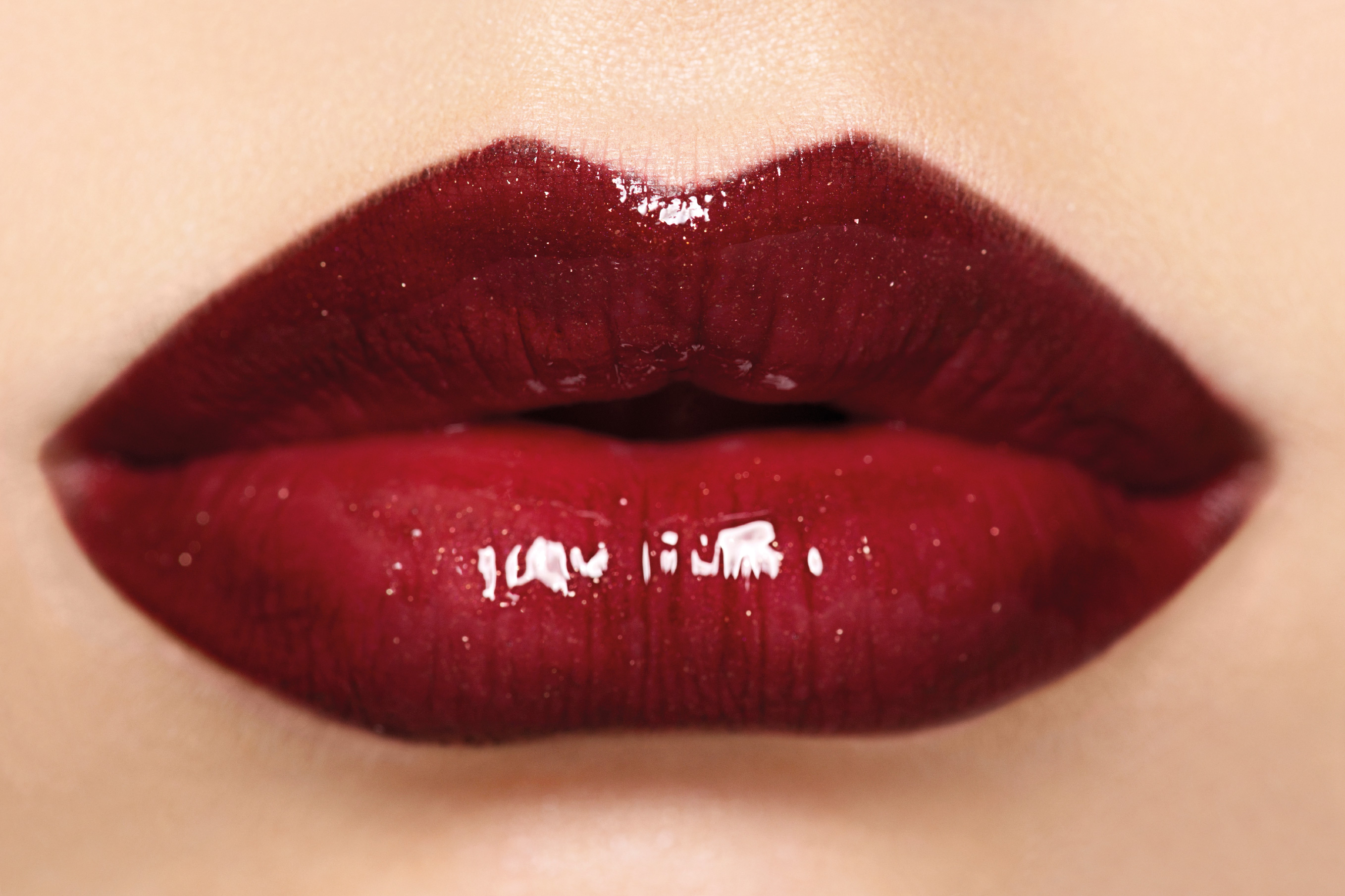
Cosmetics and perfumes are offered as powders, liquids, creams and emulsions. Some products and their functions overlap with medical substances.
Infrared spectroscopy is an analytical tool which differentiates between them, both cosmetics and toiletries as well as medicinal ingredients.
One part of the human body needs special care – the lips. They are very sensitive towards environmental influences, for example exposure to the sun, food or viruses such as herpes. These all affect the lips and can cause painful reactions. This article focuses on lip balm, available as cream or balsam.
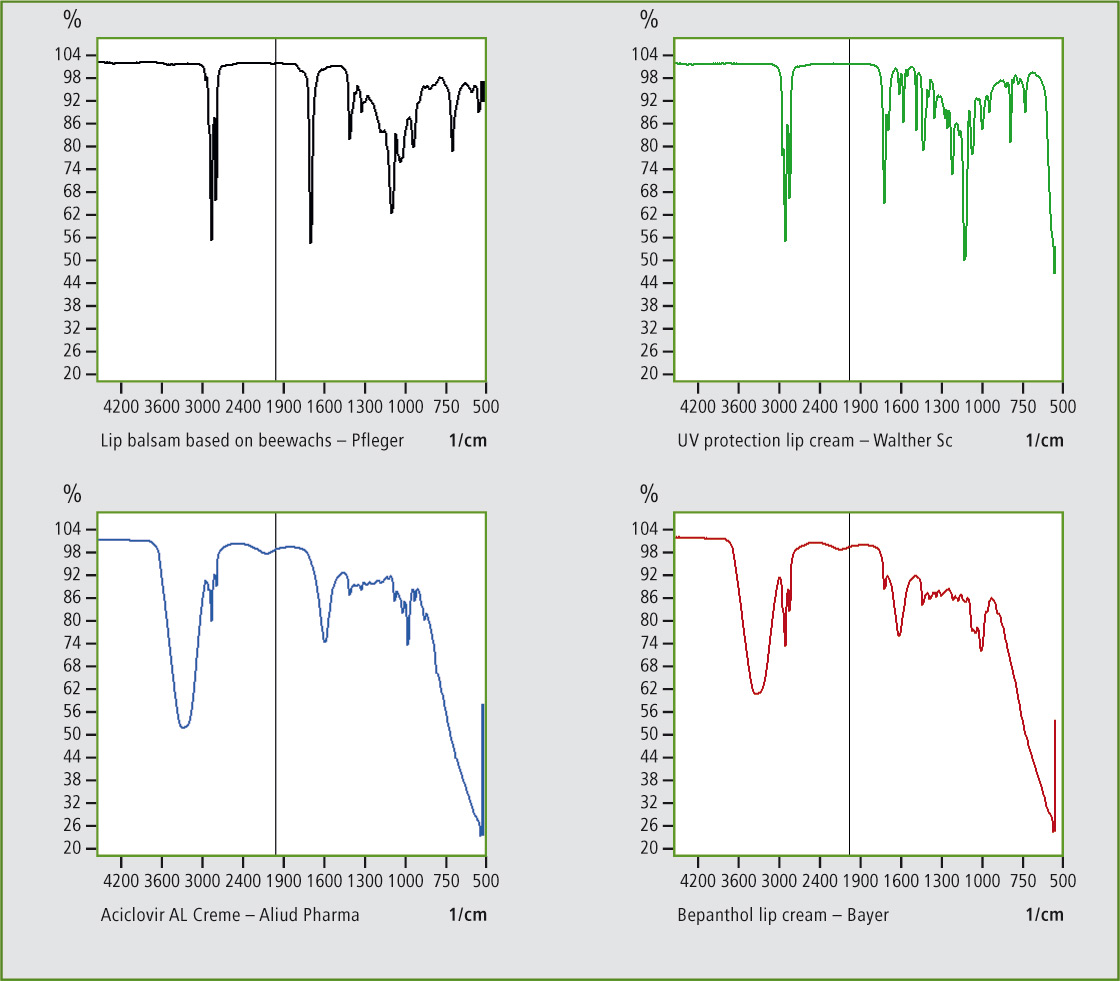 Figure 1: Four different infrared reflection spectra from diverse lip balsams and creams: black shows lip balsam, green a UV protection lip cream, blue a medicine against herpes while the red line shows a pharmaceutical lip cream containing dexpanthenol and ceramides.
Figure 1: Four different infrared reflection spectra from diverse lip balsams and creams: black shows lip balsam, green a UV protection lip cream, blue a medicine against herpes while the red line shows a pharmaceutical lip cream containing dexpanthenol and ceramides.
Special care for lips
In the dry atmosphere indoors during the winter, lips tend to dehydrate and need special care. The same effect occurs in sunlight in winter or summer. Under these conditions, water in a lip cream is unhealthy. Instead, a fatty product is needed for protection of the lips in order to avoid sunburn. Particularly in snow-covered mountains regions the burn effect is even more dangerous and the lips demand care products with a higher proportion of fat with UV filters.
Medical creams are independent of this subject. Their role is to transport embedded medicine into the lips to stop or avoid the appearance of diseases such as herpes (herpes labialis).
In order to demonstrate the simple differences between pharmaceutical and cosmetical ingredients, some lip creams were measured using FTIR spectroscopy equipped with a single ATR (Attenuated Total Reflectance) accessory. Small portions of balsam and creams were placed on the measurement window (2 mm in diameter) of the single reflection ATR unit. The accessory used is based on the diamond window.
FTIR methods applied
FTIR spectroscopy is a powerful tool which can be applied to a wide range of sample types. The majority of the samples can be read using an ATR accessory in the instrument. Compared to other techniques, ATR eliminates most of the sample handling time required. In most cases, a sample can simply be dispensed to the ATR crystal and detection can start without any further preparation. In this context, the diamond-equipped ATR version is useful since the high pH-value of many creams can attack the conventional ZnSe crystal normally used in the ATR accessory.
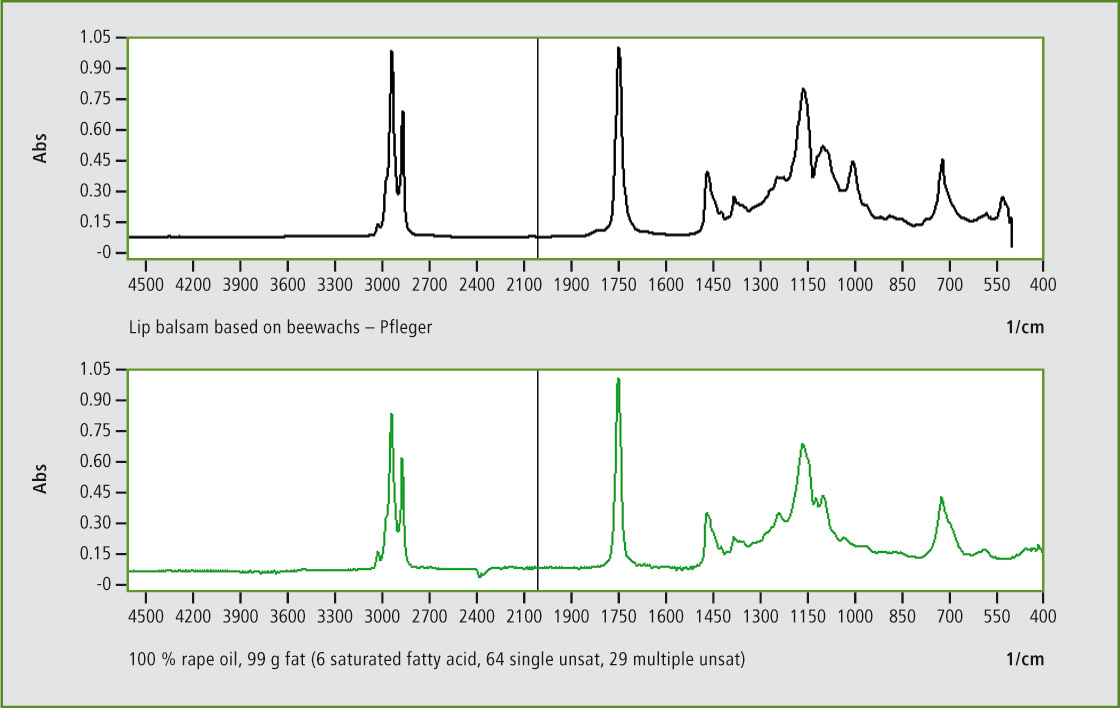 Figure 2: Comparison of the lip balsam with a rape seed oil spectrum. The peaks in the spectra mainly belong to the fatty acid molecular groups.
Figure 2: Comparison of the lip balsam with a rape seed oil spectrum. The peaks in the spectra mainly belong to the fatty acid molecular groups.
Samples were applied directly to the measurement window. For data acquisition, default resolution was used with wavenumber ranges 4,000-400 cm-1, Happ-Genzel Apodization and 4 cm-1 resolution with an accumulation of 40 scans for the signal averaging (multiplex advantage of the FTIR technique).
The benefit which ATR provides is excellent throughput and performance – combined with Shimadzu’s FTIR Spectrophotometer with exceptionally high throughput of light and very high signal-to-noise ratio. Introducing a liquid or powder sample to the accessory simply requires dispensing the material into the small measurement window.
The spectra of balsam and creams
According to the label, the lip balsam is a mixture of detergents blended with beeswax. A library search connects the spectrum to fat, oils and waxes. It shows the typical fatty acid signal at 1,740 cm-1.
The lipstick with UV protection and the balsam are reduced in the main spectrum to fat, oils and wax. The balsam spectrum contains more infrared information which seems to be of inorganic material, most probably TiO2 or some other salt as the cream is white in color. The whitener must be either digestible for the human body or harmless in order to move through the body without complication.
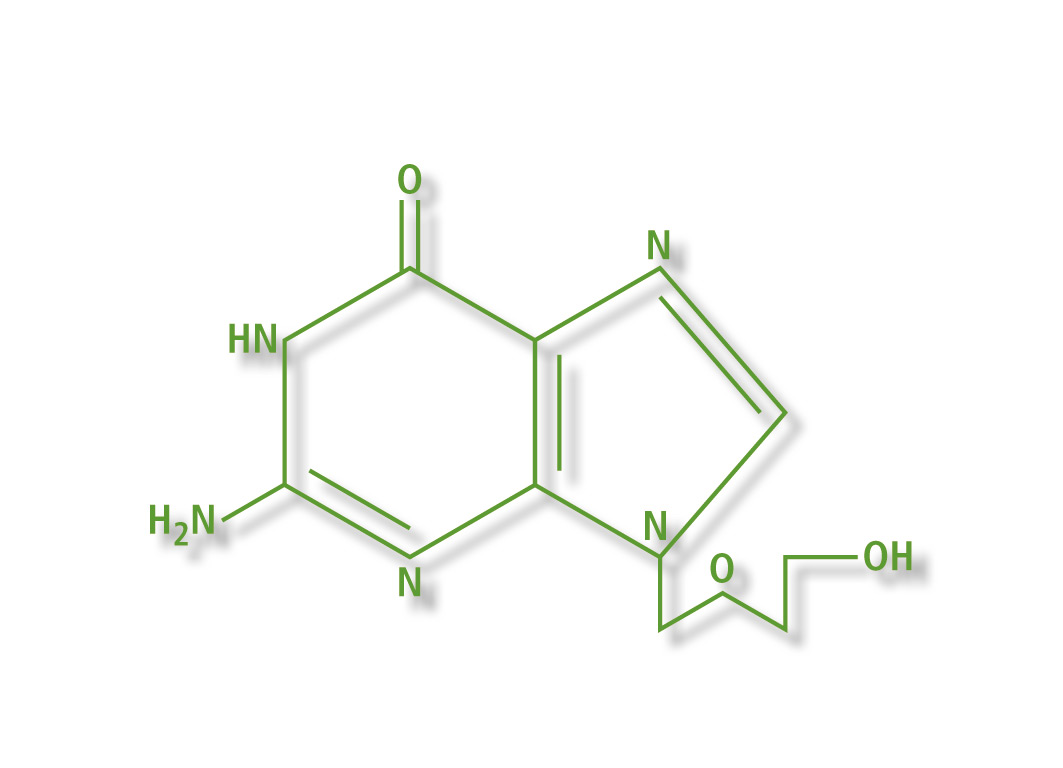 Figure 3: The chemical structure of Acyclovir, by name 2-Amino-9-(2-hydroxyethoxymethyl)-3H-purin-6-on.
Figure 3: The chemical structure of Acyclovir, by name 2-Amino-9-(2-hydroxyethoxymethyl)-3H-purin-6-on.
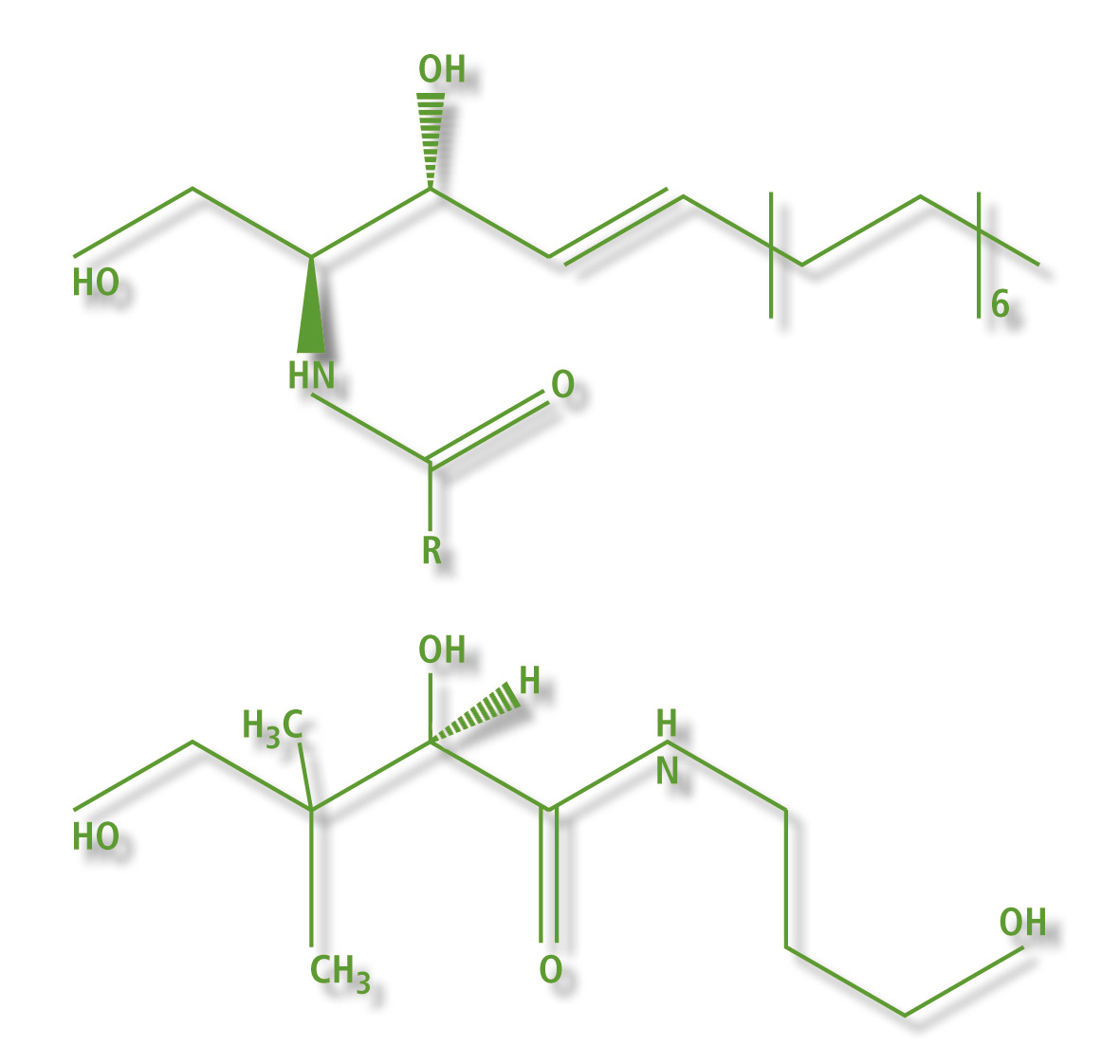 Figure 4: Structures of Ceramide (above) and Dexpanthanol (below); above the typical structure of a ceramide is shown whereas R equates to a fatty acid.
Figure 4: Structures of Ceramide (above) and Dexpanthanol (below); above the typical structure of a ceramide is shown whereas R equates to a fatty acid.
The third spectrum is a typical profile of a water-based spectrum. Strong and broad signals in the region of -OH structures are visible (strong 3,300, strong 1,600 and broad weaker signal around 2,100 cm-1). In the fingerprint range some additional signals show the ingredients mixed with the water-based cream. Not all of the signals relate to the typical fat signals, because the 1,740cm-1 signal for fatty acids is missing. In this case, paraffin and Vaseline instead of fatty acids form the base of the cream. The different alcohols in this cream have related signals at about 1,044 and 1,082 cm-1. The pharmaceutical ingredient Aciclovir with 5 % (weight %) is included in the cream.
The signal at 1,380 cm-1 can be the vibration of the -(C-N) molecular group. Other reference signals of amine structures overlap with the water signals and cannot be seen directly.
The fourth spectrum shows that not only water is the base of the pharmaceutical product Bepanthol. Near to the broad signal of water, a sharp signal in the range of the fatty acids at 1,740 cm-1 makes a difference. This signal is recognized in the spectra for the balsam and the UV protection cream. It is the one for fatty acids. In addition, Bepanthol includes Dexpanthenol and Ceramides.
Conclusion
FTIR is an exceptionally versatile technique offering high levels of sensitivity and specificity while needing very little time or effort to perform. The sequence from measurement to library match takes only a few clicks of the mouse, and samples can be measured in a few seconds simply by dispensing solids or liquids onto the single-crystal ATR. Some samples can be measured with greater sensitivity using a multiple-bounce ATR design.
The infrared comparison shows spectra for four products relating to the ingredients of the creams and balsam. The spectra are dominated by water and fat or wax-style materials. Where the content of the pharmaceutical ingredient is more than 1 %, identification is possible.
Instruments:
FTIR: IRAffinity-1
Accessory: DuraSamplIR, diamond based single reflection unit
Structure analysis: IRAnalyze version 1.3
Libraries: Sadtler, Shimadzu